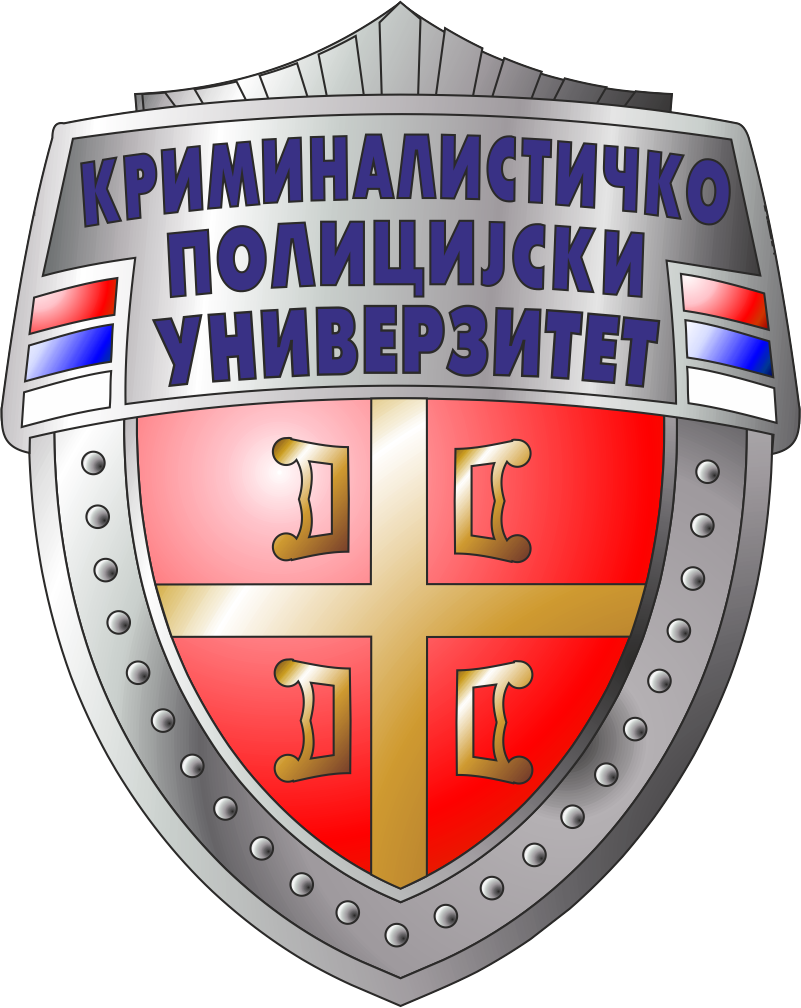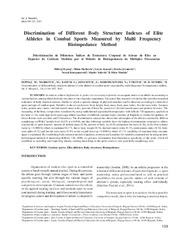Приказ основних података о документу
Discrimination of Different Body Structure Indexes of Elite Athletes in Combat Sports Measured by Multi Frequency Bioimpedance Method
| dc.creator | Dopsaj, Milivoj | |
| dc.creator | Marković, Milan | |
| dc.creator | Kasum, Goran | |
| dc.creator | Jovanović, Srećko | |
| dc.creator | Koropanovski, Nenad | |
| dc.creator | Vuković, Marko | |
| dc.creator | Mudrić, Milos | |
| dc.date.accessioned | 2019-03-21T16:10:40Z | |
| dc.date.available | 2019-03-21T16:10:40Z | |
| dc.date.issued | 2017 | |
| dc.identifier.issn | 0717-9502 | |
| dc.identifier.uri | http://jakov.kpu.edu.rs/handle/123456789/792 | |
| dc.description.abstract | In order to achieve high results in sports, it is necessary to provide an adequate status of an athlete in according to various factors, among which the body structure is one of greater importance. The aim of this research is to define the most discriminated indicators of body structure indexes, thanks to which a specific change of physical structure can be observed according to a branch of sport and type of combat sport. Variables in the research were: body height, body mass, body mass index, free fat mass index, fat mass index, protein mass index, skeletal muscle mass index, percent of body fat, percent of skeletal muscle mass and protein fat index. The measuring of the body composition is realized by using multichannel segmental bioimpedance with InBody 720 apparatus, applied on the total of 112 male high level senior-age athlete members of different national team's member of Republic of Serbia (62 judokas, 29 Greco-Roman style wrestlers and 21 karatekas). The discriminative analysis has shown that subsamples of the athletes statistically differ in morphology on Wilks' lambda level (0.435, p = 0.000), and that following variables have the highest discrimination compared to athlete respondents in sport function: percent of skeletal mass (0.34), percent of body fat (0.28) and protein fat index (0.26), as the first isolated factor (p = 0.000) by which is explained 86.3 %, that is body weight (0.74), skeletal muscle index (0.73), protein mass index (0.72), body mass index (0.72) and free fat mass index (0.70), as the second factor (p = 0.030) by which 13.7 % variability of measured body structure space is explained. By establishing body structure models of judokas, wrestlers and karatekas for variables examined and by using modern technological method of measuring (InBody 720, 2008) we got new information that characterize specificity of the sport, which all contribute to spreading and improving already existing knowledge in the sports sciences and sport body morphology area. | en |
| dc.publisher | Soc Chilena Anatomia, Temuco | |
| dc.relation | info:eu-repo/grantAgreement/MESTD/Integrated and Interdisciplinary Research (IIR or III)/47015/RS// | |
| dc.rights | openAccess | |
| dc.source | International journal of morphology | |
| dc.subject | Combat sports | en |
| dc.subject | Elite athletes | en |
| dc.subject | Body structure | en |
| dc.subject | Bioimpedance | en |
| dc.title | Discrimination of Different Body Structure Indexes of Elite Athletes in Combat Sports Measured by Multi Frequency Bioimpedance Method | en |
| dc.type | article | |
| dc.rights.license | ARR | |
| dcterms.abstract | Мудрић, Милос; Допсај, Миливој; Марковић, Милан; Јовановић, Срећко; Вуковић, Марко; Коропановски, Ненад; Касум, Горан; | |
| dc.citation.volume | 35 | |
| dc.citation.issue | 1 | |
| dc.citation.spage | 199 | |
| dc.citation.epage | 207 | |
| dc.citation.other | 35(1): 199-207 | |
| dc.citation.rank | M23 | |
| dc.identifier.doi | 10.4067/S0717-95022017000100033 | |
| dc.identifier.fulltext | http://jakov.kpu.edu.rs/bitstream/id/2862/790.pdf | |
| dc.identifier.scopus | 2-s2.0-85018811579 | |
| dc.identifier.wos | 000400464600033 | |
| dc.type.version | publishedVersion |


